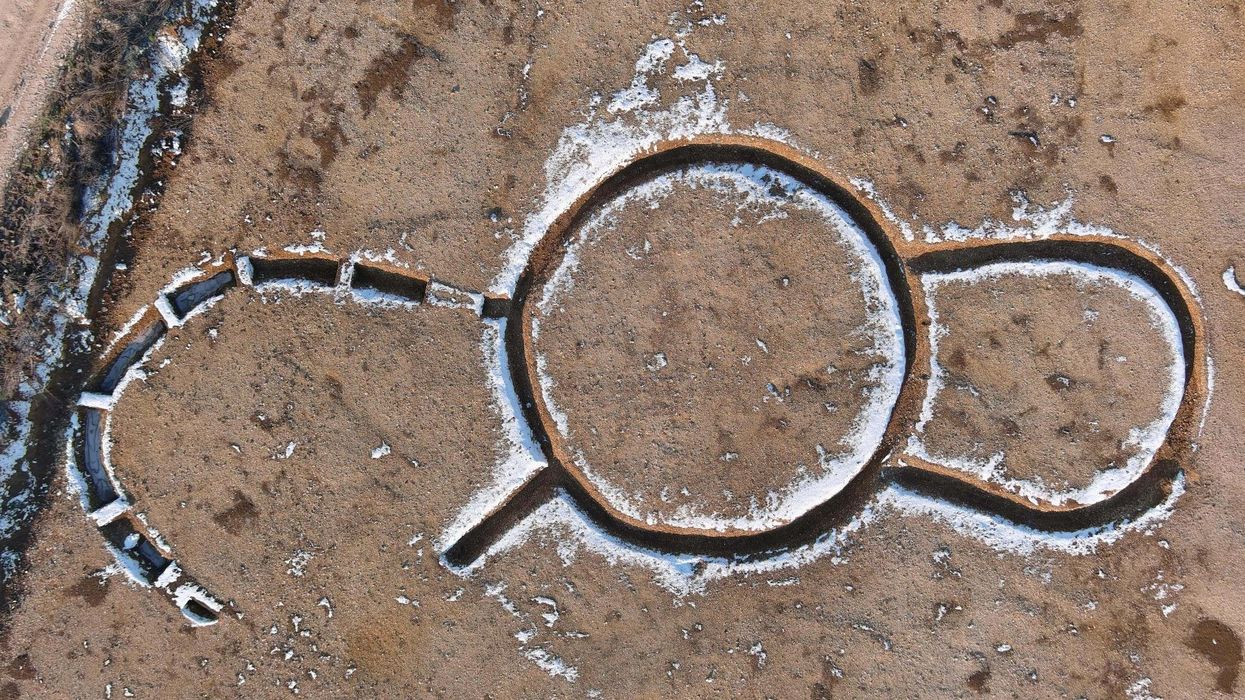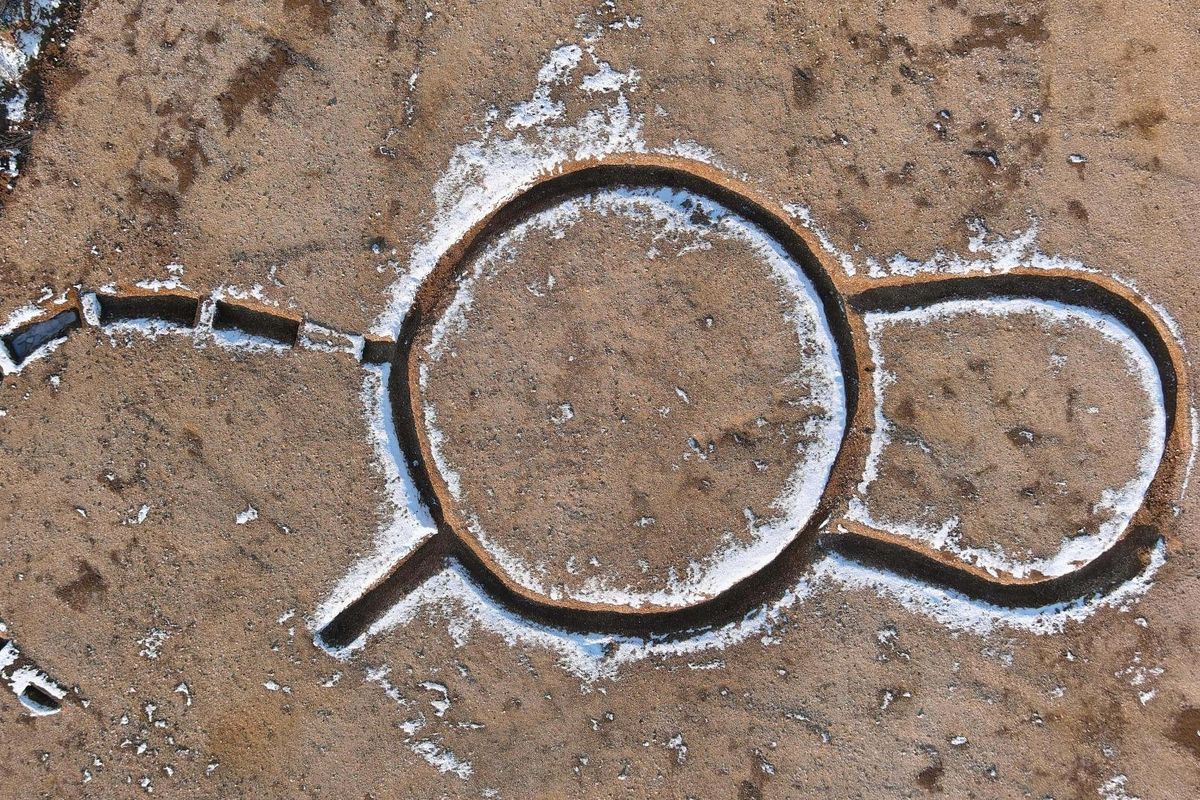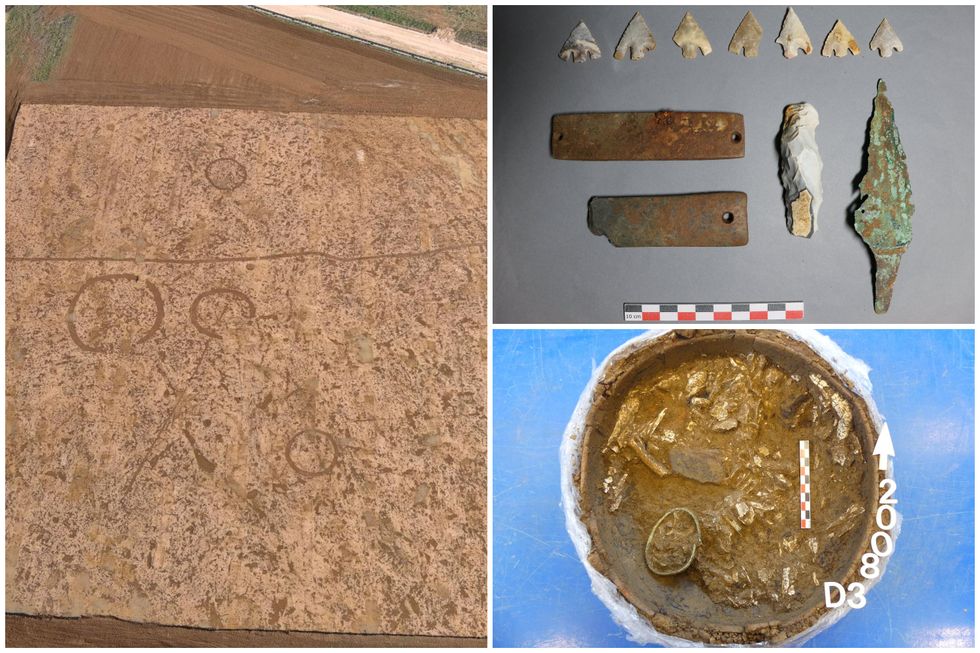Science & Tech
Harriet Brewis
Sep 19, 2024

A triple enclosure unearthed in eastern France is like nothing archaeologists have ever seen before
(Jérôme Berthet, Inrap)
A sprawling monument spanning centuries or even millennia has been unearthed in eastern France, in what archaeologists are hailing as an “unprecedented” discovery.
A team from the country’s National Institute for Preventive Archaeological Research (Inrap) were excavating an area of Marliens, about 20km east of Dijon, when they found the remnants of settlements spanning from the Neolithic Age (between 10000BC and 2200BC) and the Iron Age (1200BC to 550BC).
The oldest occupation – meaning a layer of remains left by a single culture – was the most intriguing to the experts.
It featured an eight metre (26-foot)-long "horseshoe" enclosure attached to a circular structure measuring 11 metres (36 feet) in diameter, with another open enclosure alongside that.
All three structures are believed to be from the same time period and a layer of gravel in the side enclosures indicated that a fence had once stood there.
And yet, the Inrap experts currently have no idea what the purpose of the enclosures was.
“This type of monument seems unprecedented and currently no comparison [with other sites has been possible],” the researchers wrote in a press release (in French).
“The dating still remains uncertain, however, the only artefacts discovered [on the site] correspond to cut flints which would suggest [they came from] the Neolithic period,” they added.
“Radiocarbon analyses are now underway to clarify the chronology of this monument.”

Elsewhere in the excavation area, which measures 60,000 square metres (nearly 200,000 square feet) the team found several objects underneath a level of topsoil: seven flint arrowheads; two archer's arm guards; a flint lighter; and a copper alloy dagger.
The team said traces of iron oxide were found on one of the armbands, corresponding to pyrite, an essential element for lighting fires.
They noted that this series of objects most often accompanies a burial, however, they have not yet been able to confirm whether this was indeed such a site.
“Analyses of the composition of the copper alloy of the dagger should make it possible to establish its origin and provide us with information on commercial exchanges at that time,” they noted.
In addition, the archaeologists unearthed several wells dating back to the early Bronze Age (around 3000BC), and an ancient cemetery “characterised by the discovery of six cremations dating from the First Iron Age”.
“The urns, covered by a lid, contained a single bone deposit sometimes accompanied by ornaments (bracelets and/or rings in copper alloy and iron),” they said.
Inrap confirmed that analysis of the cremated bones is now underway to determine funerary practices at the time of the burials.

The discovery of the complex leaves many questions to answer, with the experts hoping that studies will reveal the purpose it once served and how the land, and its people, evolved over the ages.
Sign up for our free Indy100 weekly newsletter
Have your say in our news democracy. Click the upvote icon at the top of the page to help raise this article through the indy100 rankings
Top 100
The Conversation (0)













